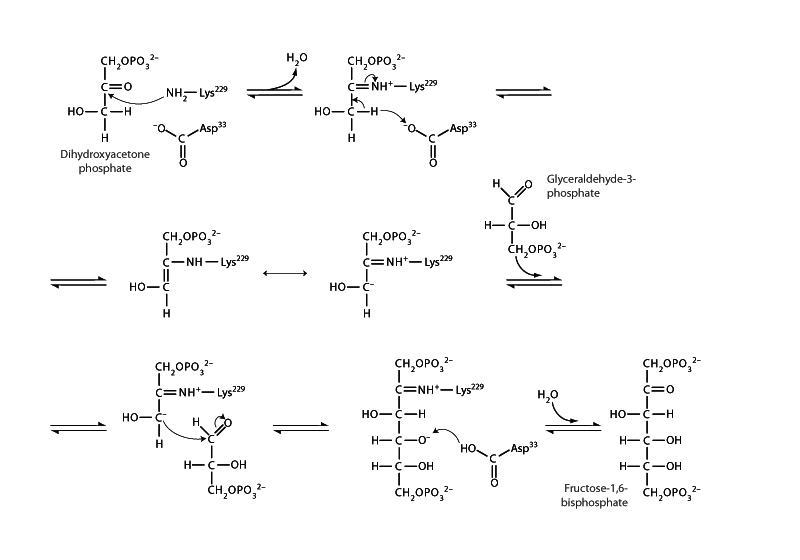
Aldolase reversibly splits fructose 1,6-bisphosphate into the triose phosphates dihydroxyacetone phosphate and glyceraldehyde 3-phosphate. The reaction appears in both glycolysis and gluconeogenesis. Glycolysis is a catabolic pathway and uses the forward reaction. Gluconeogenesis is an anabolic pathways and uses the reverse reaction. The mechanism shown above represents the reverse direction.
It's useful to study aldolase in the reverse mechanism because this makes it easier to see the reaction as a variant of aldol addition. In the aldolase mechanism, however, unlike aldol addition, the carbanion nucleophile is the resonance stabilized imine-enamine intermediate of an enzyme-lysine linked Schiff base instead of appearing through keto-enol tautomerism. Hydrolysis resolves the adduct so that the same net process occurs in either case.